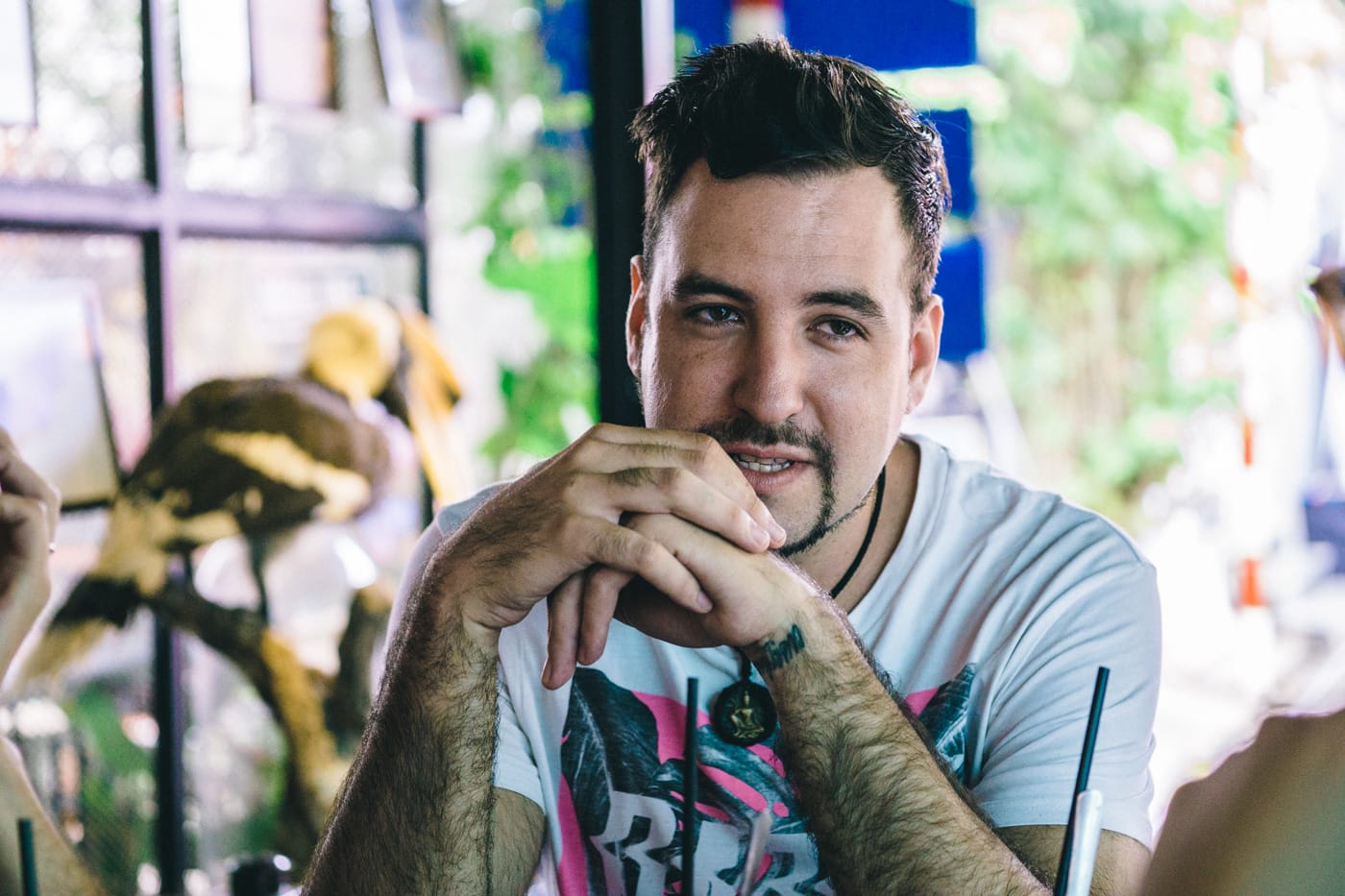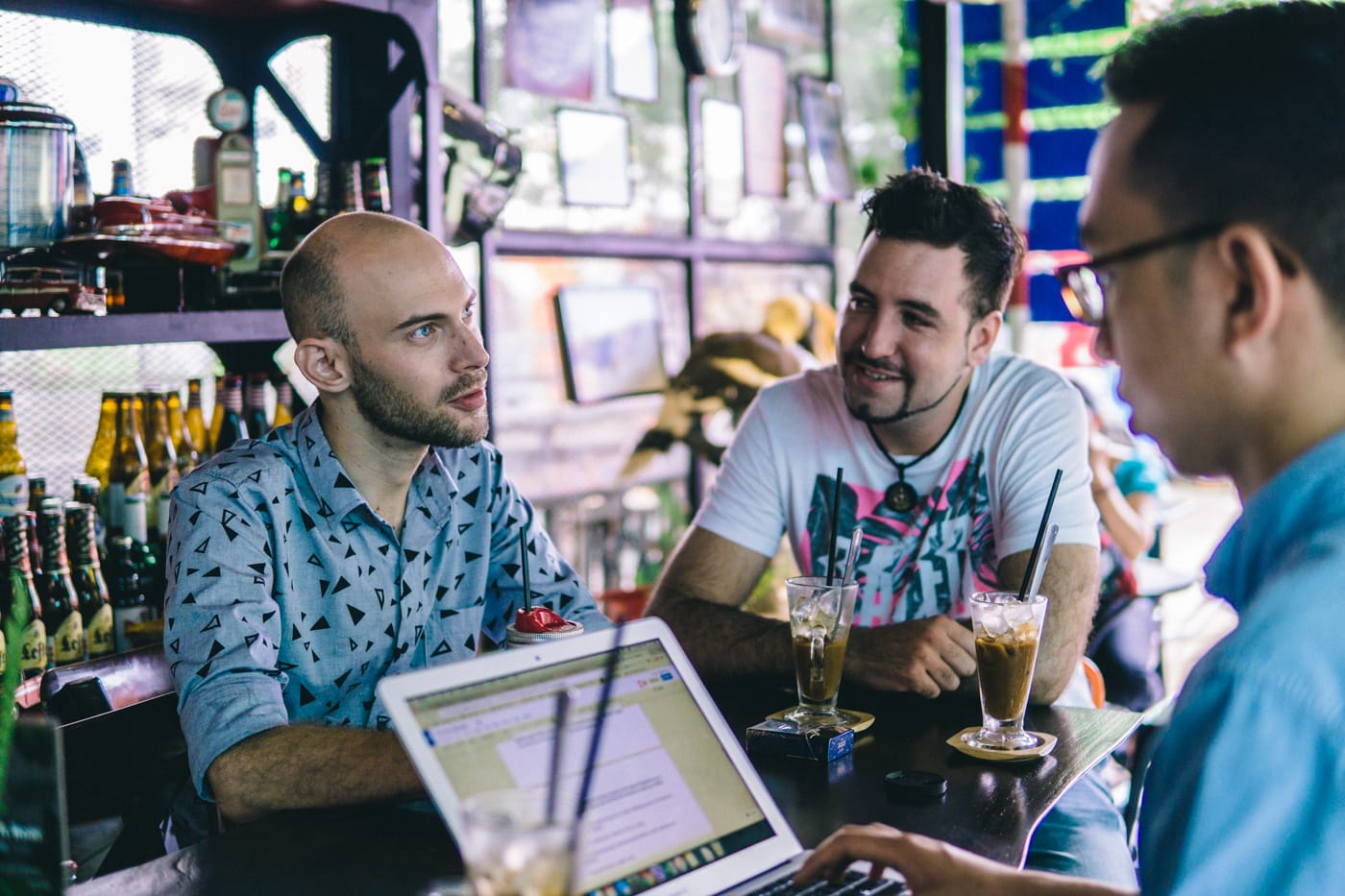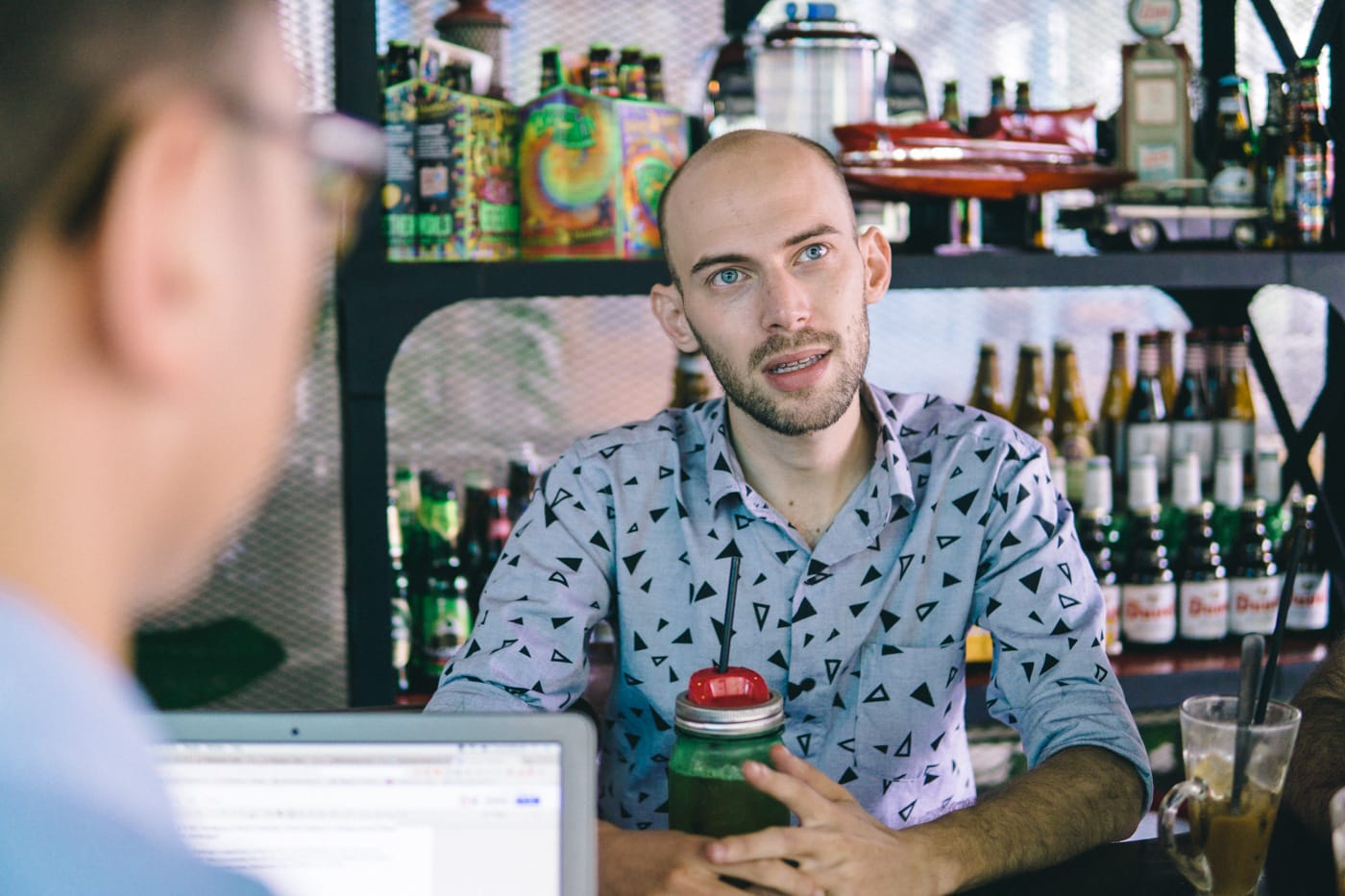While searching for the movers and shakers of the new Vietnam, we decided to take a look at who else is taking media as serious as we are in Vietnam.
That’s when we decided to speak with Brian Letwin and Alberto Prieto, co-founders of Saigoneer. They’ve been around for a few years and are known as one of the most reliable go-to English-language publications for all-things Vietnam. We’re a fan of their fun, witty original content and their consistent, reliable production of daily news reporting.
We decided to stop by their new offices in Ho Chi Minh City to get the scoop on their ongoing journey in the media industry in Vietnam. We also wanted to understand a bit more about their personal journeys in Vietnam.

Tell us about Saigoneer’s media philosophy. What is your team doing differently?
Part of our brand identity is the “eer” at the end of “Saigoneer.” The suffix borrowed from “pioneer” comes from the idea that our mission is to explore the seemingly bottomless rabbit hole of street food joints, art projects and history of Saigon. And Vietnam as a whole.
This identity is at the core of our content strategy. We’ve increased resources for high-quality original content production that can’t be found elsewhere. A good example is a recent story we published about Vietnamese brass funeral bands. The writer examined a link between the bands found in Vietnam and those found in New Orleans which have a similar sound and function. It was a process that involved interviewing musicologists at both Tulane University and a local music conservatory.
These long form articles are also joined by shorter, series-based pieces. For example, we have a weekly column of Hem Gem articles where we visit and rate carefully vetted street food eateries. Finally, we like to add a dash of sarcasm and playfulness to our writing when appropriate, especially on social media.

What are some exciting new projects or features rolling out soon?
We’re rolling out a new version of the website around Tet. It’s been almost a year in the making. It’ll be a huge step up technically-speaking from where we are now. Content will be served based on an algorithm, rather than in chronological order. There will be a number of hubs that display content in different ways. In addition, we’ll introduce API integrations with companies like Ticketbox and Grab that will allow users to book tickets and cabs directly from an event listing. There’s a lot more to it, but we’re not quite ready to talk about them just yet.
How long did it take you to hit the “sweet spot” of traction to begin monetizing? Who are your readers?
It took about two years before clients started to take us seriously. Last year, our third year of operations, things really started to pick up. We’re in an exciting time where many businesses are moving their marketing budgets into digital products.
While most of our readers are Vietnam-based, we’re also growing our international audience. It’s about a quarter of our traffic. We also recently starting hosting overseas which has boosted speeds for our international readers.

What are some unlikely sources of growth for Saigoneer?
One source is Twitter. We’ve discovered an audience that has much higher content interaction than Facebook. And it’s more global. It’s easy to write off Twitter as a distribution channel in Vietnam since everyone uses Facebook and Instagram. But we’ve had famous academics and overseas writers contact us through Twitter. They would have never contacted us through our Facebook page.
Our biggest story ever was distributed mostly via Twitter. Featuring a leaked racy VietJet photoshoot, it did well on our regular channels. But it didn’t take off until the story was picked up by a Fox affiliate in Atlanta. From their share on Twitter, we received 50,000 views. The Saigoneer Twitter account is also important for sourcing content. It’s a powerful tool that taps a global audience.

Who’s part of the Saigoneer team?
The team is a 50-50 mix of foreigners and Vietnamese. Most teams within Saigoneer contain both by design. Given that we’re a hyper-local publication that earns its stripes from being in the know, we need as much local input as possible. It’s mainly broken up into: account services, sales, IT, strategy, creative and editorial. We also have a sister creative firm called UnBranded Creative through which we offer creative services to our clients.
Brian: We’ve also moved our core development team (in other words, our CTO Alberto) from client services to Saigoneer now that our ad revenue can support the business costs. Everyone in Vietnam needs a new website. One of the first questions we get is: can you build a website for us? The same goes for editorial. A few years ago, I was writing everything. We have a legit editorial team now so we can produce better work consistently and at greater volume. I have enough skills to do each function (sales, social media, editorial, etc) at Saigoneer well enough, but we’re now at enough scale to hire an expert for each function. Now I do business development nearly full time.

What is it like managing an English-language content website in a foreign country? What are some challenges?
The biggest challenge is separating ourselves from expat publications in town because we publish in English. We try to combat this with the aforementioned team structure and content strategy. It seems to be working as we now have more Vietnamese than foreigners readers on the site.

Tell us one memorable story you’ll always remember while building Saigoneer.
The experience of learning how media works in Vietnam. Standards are loose and there are no rules. For example, backlinking is a paid service in Vietnam. One time, we published an illustrated guide to Vietnamese slang with custom watermarks. One website took all of the illustrations, cropped out the watermarks, and translated everything into Vietnamese. Essentially taking the content and repackaging it. We contacted them, thanking them for using our content and asked them to backlink to our site. We learned afterwards that this “service” costs $15 to backlink. Unfortunately there’s nothing we can really do. This goes back to the problem plaguing media overall: if you can’t find the source, how do you vet the information?
On a lighter note…
About two years ago, we published a story featuring a collection of illustrations about motorbikes and the ridiculous things they carry.
At that point, we had about 50,000 to 70,000 monthly active users. It did well on Facebook and organically, a bit better than average. A few hours later, the website started crashing. At first we thought our local hosting company was experiencing problems, but then we dug into the server logs and Google Analytics. Traffic went up suddenly. The rest of the month’s traffic looked flat line traffic compared to the recent spike. At the time we usually hosted 100-200 visitors per hour. Suddenly, we were in the tens of thousands. Later we found out that Vietnamese rapper Suboi had shared the article with her 900,000 fans.
From that one article, we received 40,000 unique visitors. Nearly a month’s worth of traffic in one day. It really showed us the power of influencers in Vietnam.

Thanks for sharing your business building insights with our readers! We’re also curious about your experiences living in Vietnam…
Why did you two move to Vietnam?
Brian: I was burned out working for ad agencies in New York. My friend Jake Weger was living in Vietnam at the time that I was looking to move out of New York. He stopped by in 2010 and put on the hard sell. I was here three months later.
Albie: Similar to Brian in 2010, I was looking for adventure and began researching study abroad programs, specifically in Southeast Asia. I eventually found an experimental Erasmus program for the region. I heard good things about Vietnam in terms of IT so I applied for a program specializing in it. Luckily I got chosen for that one over a program in Thailand. So here I am. Since the very first moment I stepped foot in Vietnam, I knew this was my place. I love big cities. The chaos, the people, the warmth.

What is Ho Chi Minh City missing in its food and beverage scene? What would you like to see?
Brian: Mexican food and cheap sour cream. An Ethiopian place would also be a welcome addition.
Albie: I’m Spanish and I think there are very poor choices of Spanish food in town. I would love to see more bars and restaurants run by Spaniards. Cheaper cheese and wines!

What were some of your initial struggles in Vietnam and how did you overcome them?
Brian: Never having been to Asia I faced some industrial design challenges when I arrived. I remember having my first jug of water delivered to my room after my first Bui Vien hangover. Coupled with my jet lag, I didn’t realize that these jugs had a spout. After a few minutes of trying to unscrew the cap on top with no success, I ended up putting it on a table and tipping it over until the water was level with the small hole on the cap. I used it in a way I could only describe as using a baby bottle. My friend came by soon after and not-so-subtly showed me the error of my ways.
Albie: The traffic. For some time, I didn’t ride a motorbike since it was forbidden in my family to ride one. I remember walking long distances and using the bus to go everywhere the first month. Amazing right? Who does that in Saigon? But one day I had to face the reality: I needed a motorbike. Getting a motorbike was one of the best lifestyle changes I made for myself in Saigon. Pity the cars are changing how traffic moves in this city now. It was so different six years ago.
If you enjoyed reading this profile on Saigoneer, Brian, and Albie, please consider liking our Facebook page for more stories on the new Vietnam.
